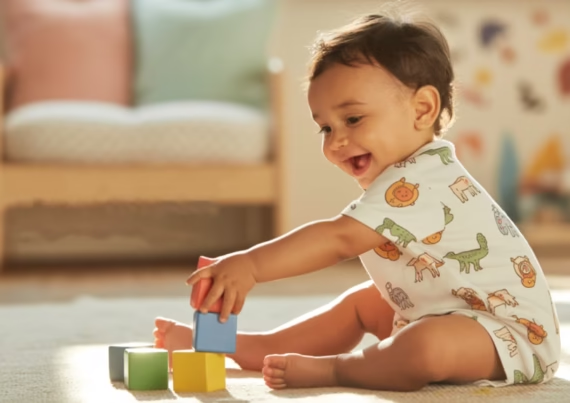How to Find the Right Production Volume for Your Baby’s Clothing Line? – A Manufacturer’s Perspective
As an experienced baby clothing manufacture, we understand that determining the right production volume is a challenging decision for emerging baby clothing brands. Many startups approach us feeling confused about Minimum Order Quantity (MOQ), often perceiving it as a rigid and insurmountable barrier. However, our experience shows that MOQ is far more flexible and dynamic than you might imagine.
This article will delve into the true meaning of MOQ from our perspective as a children’s clothing manufacturer, debunk common myths surrounding it, and provide practical guidance to help you find the most suitable production volume for your infant apparel line. Our goal is to empower your brand, enabling you to confidently launch and grow your kids’ wear business.

With 17 years of experience, petelulu provides a full range of
manufacturing services from design to delivery.
Start from scratch , Create your own brand.
17+
serving top 10 American brands
15+
serving top 10 Australian brands
12+
serving top 10 European brands
Contact us to get the quote.👇
What does MOQ actually mean for a baby’s clothing brand?
In the realm of baby clothing manufacture, Minimum Order Quantity (MOQ) refers to the lowest number of units for a specific product or style that our factory is willing to produce. This isn’t an arbitrary figure but is based on the efficiency of our apparel production, our cost structure, and the realities of our supply chain. Understanding the components of MOQ is your first step towards successful production volume planning.
What exactly does MOQ mean for small brands?
For small baby clothing brands, the meaning of MOQ is particularly crucial. It directly impacts your initial investment, inventory risk, and unit cost. As manufacturers, we consider various factors when setting MOQs to ensure both production line efficiency and cost-effectiveness. This means that MOQ is not a fixed rule but is influenced by the following factors:
MOQ Factor Table
| MOQ Factor | What It Influences |
|---|---|
| Fabric availability | Suppliers often have their own fabric MOQs. If we have to source fabric specifically for your order, your order volume needs to meet the fabric supplier’s minimums. |
| Custom printing/dyeing | Any custom print patterns or dyeing requires machine setup and dye preparation, incurring fixed costs. The larger the order volume, the lower these fixed costs are per piece of baby clothing. |
| Style complexity | More intricate designs require more labor hours and specialized skills. Simpler styles can often have lower MOQs due to higher production efficiency. |
| Packaging requests | Custom labels, hangtags, or special packaging also come with their own MOQs and add to the overall apparel production cost. |
| Production line efficiency | Our production lines require a certain batch size to operate efficiently. Smaller runs can lead to frequent changeovers, increasing per-unit costs. |
Are high MOQs always required? Let’s bust that myth.
We frequently hear startup kids’ wear brands express concern that high MOQs will be a significant barrier to entering the market. However, this is a common misconception. As a flexible baby clothing manufacture, we are committed to building long-term relationships with our clients and understand the needs of emerging businesses.
Is it possible to start small in babyswear production?
The answer is a resounding yes, absolutely! We know that for new brands, testing the market and managing cash flow are paramount. Therefore, we often offer flexible MOQ options, especially when building trust and a long-term partnership. While extremely low MOQs might result in slightly higher unit costs, they allow you to:
-
Reduce initial investment risk: Avoid accumulating large amounts of unsold inventory.
-
Test market response: Understand which styles are most popular before committing significant capital.
-
Iterate designs quickly: Adjust products rapidly based on customer feedback.
We encourage you to openly discuss your needs and budget with us; we are happy to explore solutions that best fit your brand.
Common MOQ Myths I Often Hear:
As children’s clothing manufacturers, we frequently encounter the following myths about MOQs from prospective clients:
-
Myth 1: MOQs are fixed and non-negotiable.
-
Truth: MOQs are often negotiable, especially if you are willing to commit to a long-term partnership or choose from our existing fabric stock.
-
-
Myth 2: You must produce huge volumes to get started.
-
Truth: Many factories, including ours, support small batch orders to help new brands get off the ground. The key is finding the right apparel production partner.
-
-
Myth 3: Custom equals expensive.
-
Truth: While customization does have its costs, through smart design and material choices, we can achieve unique baby clothing designs within a reasonable budget.
-
How do I know the right production volume for my brand?
Determining the correct production volume is crucial for success. As your baby clothing manufacture partner, we don’t just provide production services; we guide you toward informed decisions.
How can startups decide on a production quantity that makes sense?
We advise startup brands to adopt a “smarter is better” approach rather than “bigger is better.” This means that in the initial stages, instead of chasing large volumes for lower unit costs, focus on accurate forecasting and risk control. Here’s a framework we use to guide our clients in determining a sensible production volume:
-
Market Research and Sales Forecasting: Deeply understand your target customer and estimate how much of your infant apparel you expect to sell in the first few months.
-
Consider Product Variety: If you have multiple styles or sizes, think about how to allocate your total production volume across them.
-
Leave Room for Testing: Your first order should include a proportion of test styles to gather market feedback.
-
Assess Your Cash Flow: Ensure your production volume aligns with your financial capacity to avoid liquidity issues.
Here’s how I help new clients calculate their first order:
We work closely with new clients, guiding them through these steps to calculate the most appropriate initial order quantity:
-
Estimate Monthly Sales: Based on your market research and marketing plan, project the monthly sales volume for each baby clothing style.
-
Multiply by Stock Months: We typically advise startups to multiply their monthly sales by 2-3 months of stock to account for production lead times and sales fluctuations.
-
Factor in Product Variety: If you have multiple SKUs, ensure that each SKU’s production volume meets the minimum MOQ while the overall quantity fits your total budget.
-
Allow for Testing: We encourage clients to include a small quantity of novel or higher-risk styles in their first order for small-scale market testing.
Can sustainable materials help reduce MOQ and cost?
In today’s baby clothing manufacture, sustainability has become an increasingly important consideration. We’ve found that smart choices in sustainable materials can not only enhance your brand image but sometimes also help optimize MOQs and costs.
How does sustainability affect MOQ in babyswear manufacturing?
Opting for sustainable materials, especially those that our factory has a stable supply chain for or are readily available, can positively impact MOQs. For instance:
-
Using in-stock organic fabrics: If we have readily available stock of organic cotton or other sustainable fabrics, or if the supplier’s MOQ is lower, your apparel production MOQ might also decrease.
-
Neutral color palettes and classic designs: Focusing on timeless, neutral colors and classic baby clothing designs can reduce the need for specific seasonal fabrics or dyes, thereby lowering MOQs.
Some cost-saving tips through sustainability:
We offer our clients the following advice for optimizing costs through sustainability:
-
Leverage existing fabric stock: Ask us if we have existing sustainable fabric stock that fits your design; this often reduces both MOQ and cost.
-
Stick to neutral palettes: Fewer color variations can simplify fabric sourcing and dyeing processes, leading to lower MOQs and apparel production costs.
-
Design multi-seasonal styles: Producing children’s clothing that can be worn across multiple seasons extends product life cycles, reducing the need for frequent reorders and optimizing MOQs.

With 17 years of experience, petelulu provides a full range of
manufacturing services from design to delivery.
Start from scratch , Create your own brand.
17+
serving top 10 American brands
15+
serving top 10 Australian brands
12+
serving top 10 European brands
Contact us to get the quote.👇
- How to pick a manufacturer that balances MOQ and quality?
Choosing the right baby clothing manufacture partner is the cornerstone of your brand’s success. This isn’t just about MOQ; it’s about quality, communication, and trust.
What should you look for in a manufacturing partner?
When selecting an apparel production partner, we advise you to focus on these key factors:
-
Communication Transparency: Ensure the manufacturer can communicate clearly and promptly about production progress, potential issues, and solutions.
-
Sampling Time and Quality: Evaluate the manufacturer’s sampling capabilities and efficiency to ensure samples meet your expectations.
-
Certifications and Compliance: Understand if the factory holds relevant quality, social responsibility, or environmental certifications, which are especially crucial for infant apparel.
-
Flexibility and Support: Assess the manufacturer’s willingness to work with startup brands and provide necessary guidance and support.
My advice for finding the right factory:
As a kids’ wear manufacturer, we understand the inner workings of the industry. Here’s our advice for you:
-
Start with a sample order: Even if you plan for larger volumes eventually, begin with a smaller order to assess the manufacturer’s quality, communication, and delivery capabilities.
-
Communicate directly: Establish a direct line of communication with the factory team to ensure your needs are accurately understood.
-
Request certifications: Especially for baby clothing, ensure the factory adheres to all safety and quality standards.
-
Discuss logistics early: Clarify shipping, lead times, and costs to avoid surprises later on.
Conclusion
As your baby clothing manufacture partner, we want you to understand that Minimum Order Quantity (MOQ) is not a barrier to fear, but a concept to understand and strategically plan around. By partnering with the right apparel production facility and making informed production volume decisions, your infant apparel brand can launch confidently, manage inventory effectively, and ultimately achieve sustainable growth.
We encourage you to reach out to us to discuss how we can help bring your baby clothing vision to life. With smart planning and persistent effort, your brand is poised to thrive in the competitive kids’ wear market.
About the author
Xhiney, founder of Petelulu, brings over 20 years of experience in children’s wear design, production, and international trade. A contributor to Children’s Wear and Junior magazines, Xhiney has spent 17 years working with high-end children’s wear brands in Europe and the U.S., offering expert insights and support.
